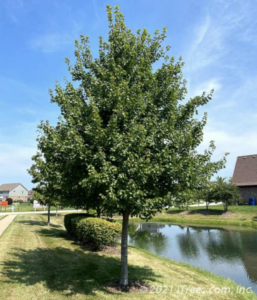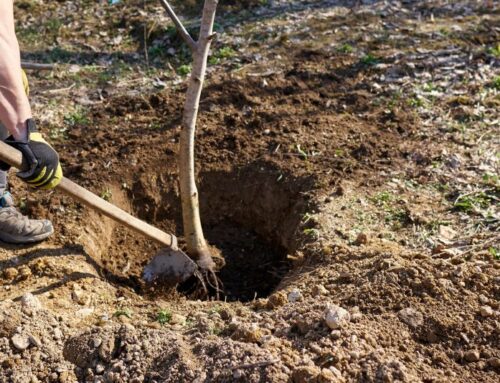
What Species is your Sapling?

- Species: Red Maple, Acer rubrum
- Maximum tree height: 65 feet
- Canopy width: 40 feet
- Growth rate: ~36 in/year
- Planting area: Greater than 10′
- Water Use Rating: Medium
- Sun exposure: Partial Shade to Full Sun
How to Plant your Tree Sapling
1. PREPARE THE SAPLING: Gently remove the sapling from its container, being careful not to damage the roots. Soak the roots in water for 3-6 hours. It’s important you never let the roots dry out.
2. PLANTING LOCATION: To give your trees the best start, first plant in a protected area. After 1 to 2 years, simply transplant to the permanent location when the trees are dormant.
When finding a permanent spot, look for a location that is away from any buildings or power lines, and has plenty of space for the tree to grow. Consider the soil quality, drainage, and amount of sunlight the area receives.
3. DIG A HOLE: Dig a hole 1 foot wide and 1 inch deeper than the roots. Holes should be 2-1/2 feet apart if planting more than one sapling. When they ready for a permanent location they should be at least 10-15 ft apart and away from any structures.
4. PLANT THE SAPLING: Place the sapling in the hole, making sure it is standing straight. It’s important that the area where the roots end and the trunk starts is level with the surrounding soil.
Backfill the hole with soil while firming the soil around the lower roots. Construct a water-holding basin around the tree so the water doesn’t run off. Water the sapling thoroughly. Do not use fertilizer, potting soil, or chemicals on your new tree.
5. MULCH THE AREA: Cover the area around the sapling with a layer of mulch (which was also included in your tree kit). Mulch helps retain moisture and protects the roots.
6. WATER REGULARLY: Most importantly, water the sapling regularly, especially during the first few months after planting. Keep the soil moist, but not waterlogged. There should be proper drainage and it should never sit in water.
7. MONITOR GROWTH: Keep an eye on the sapling’s growth and adjust your watering schedule as needed. Prune any dead or damaged branches as they appear.
Remember that planting a tree is a long-term commitment, and requires ongoing care and maintenance. With proper care, your sapling will grow into a beautiful and healthy tree!
If you have any questions feel free to reach out and message us at ![]()





